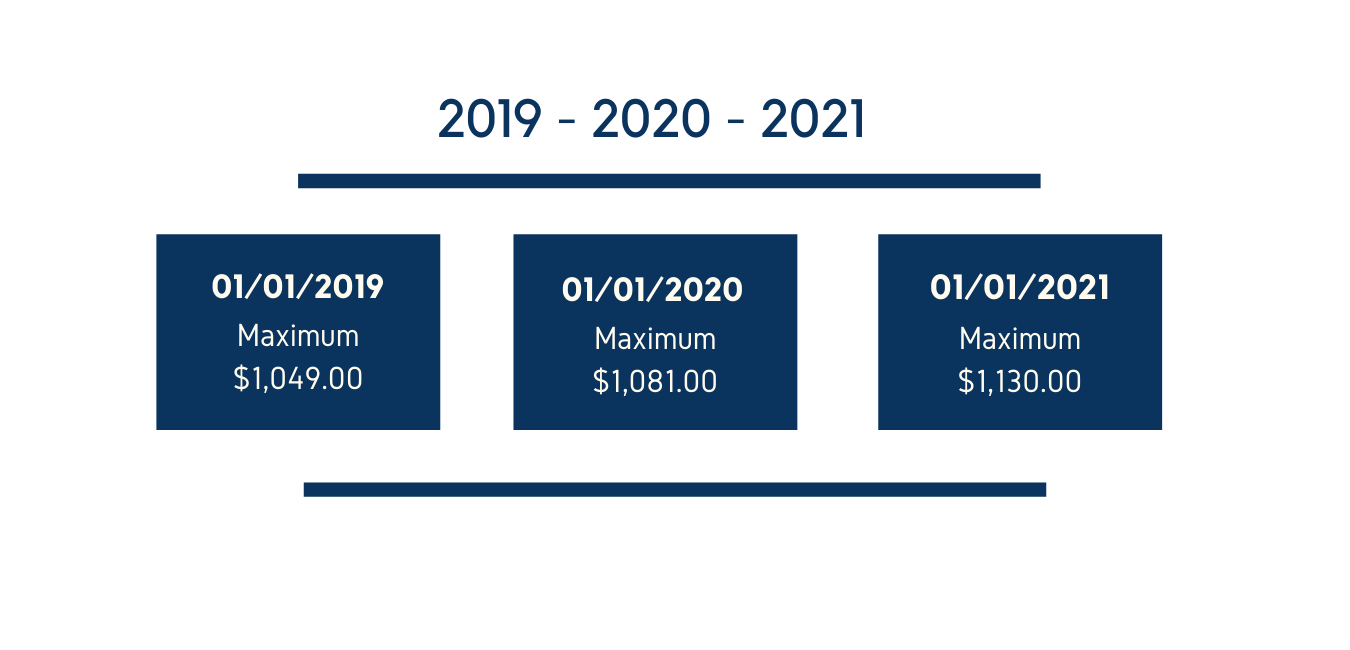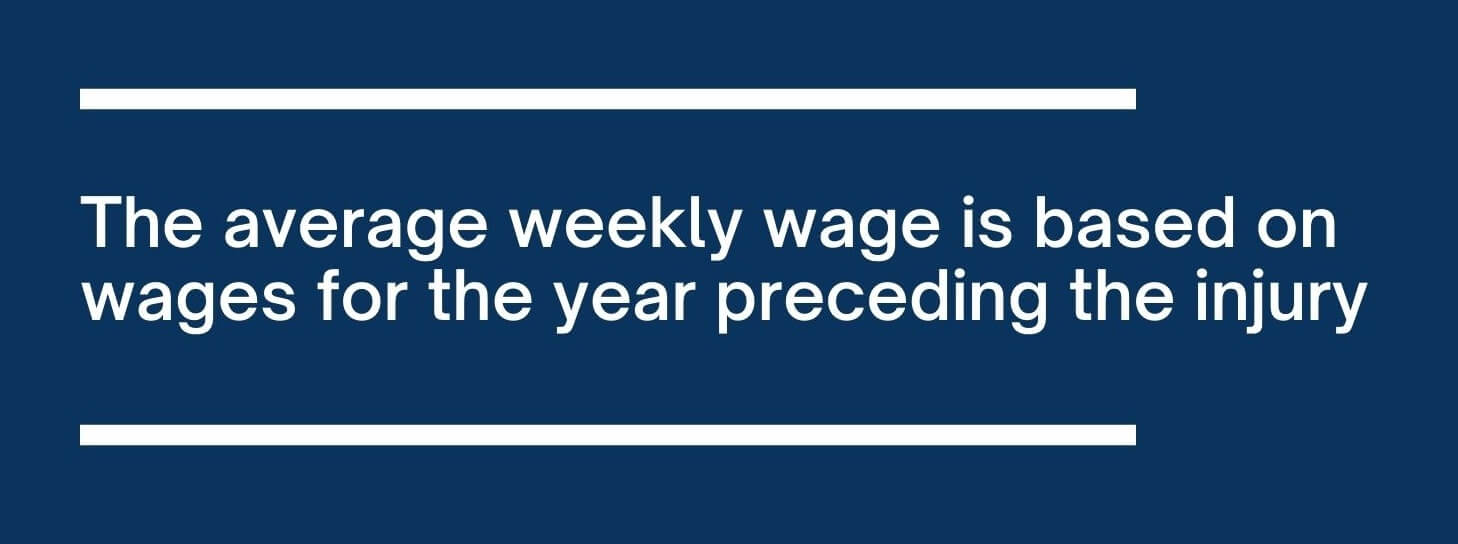2021 will hopefully bring an end, finally, to the COVID-19 pandemic. It has been a very difficult year for everybody. On a less important note globally, but nevertheless a minor victory for injured workers in Pennsylvania, the new year will bring an increase in the amount of weekly workers’ compensation benefits that individuals injured at work may receive.
For injuries that occurred in 2020, the maximum amount of workers’ comp. benefits an injured worker could receive per week is $1,081. However, the Pennsylvania Department of Labor and Industry, Bureau of Workers’ Compensation, recently announced that for injuries which happen in 2021, the weekly maximum is increased to $1,130. Still, that is the absolute maximum amount of weekly workers’ comp. benefits a person injured in 2021 will be able to receive regardless of their wages. If you have been killing it at your job all year, working a lot of overtime and earning bonuses, and you earned $2,500 per week, and then you injure yourself in 2021, the most you could receive in weekly workers’ comp. benefits is $1,130. If that sounds unfair to you, we understand.

The general rule in Pennsylvania is that an injured worker’s weekly workers’ comp. benefits will be 2/3, or 66.6%, of their “average weekly wage.” More on what that terms means momentarily. The percentage can be as high as 90% for an injured worker who is on the lower end of the wage scale. For example, a person that earns $500 per week in wages will receive weekly workers’ comp. benefits of $450. For a person who earns in the vicinity of $750 a week, the percentage will decrease to the 75% range. A worker who earns $1,000 per week will see that percentage fall to 66.6%.

That trend continues for workers on the high end of the wage scale. An injured worker who earns $1,695 per week and is injured in 2021 will receive the maximum of $1,130 in weekly workers’ comp. benefits. However, somebody who earns $1,800 per week or $2,000 or even that $2,500 figure that we threw out earlier will receive that same $1,130 in weekly workers’ comp. benefits. That would represent just 45% of their weekly wages. It does not sound right, but the Department of Labor has always imposed a maximum weekly amount that injured workers can receive. It is some consolation that there is usually an increase in the cap each year, and there is one for 2021 injuries.
So back to the average weekly wage, which dictates how much a person will receive in weekly workers’ comp. benefits. How is that calculated? First, it is based on a worker’s gross wages (before taxes), not their net wages (after taxes). The calculation is based on wages for the year preceding the injury. If someone is injured on January 10, 2021, then their wages would be considered from January 10, 2020 until January 9, 2021. Their wages are computed for each of the four quarters during this one-year period, and the average of the worker’s highest three quarters becomes their average weekly wage. It is a complicated formula which is designed to ensure that the calculation of wages is an accurate and realistic measure of what the employee could have earned but for the injury.

Of course, not everybody has worked for an employer for a year when they are injured. Some people have only been employed for nine months; others only three months; and some injured workers have only been on the job for a week. There have even been cases in which unlucky people have suffered injuries on their first day working for an employer. All of these individuals, regardless of the duration of their employment, are entitled to workers’ comp. benefits if they injured themselves in the course of their employment. The rules for calculating the average weekly wage are different for those employed less than a year, especially for those who had been working less than 13 weeks for an employer when their injury occurred. Under that scenario, because the employee has not established much of a track record, the average weekly wage is based on their expected earnings – what their employer told them they can expect to earn at the job when they were hired.
How are an employee’s tips factored into the calculation? Good question. If you work in the restaurant business (and we understand that the pandemic has had a substantial effect on this industry), the majority of the money you earn is likely from cash tips. Suppose you work as a bartender at a restaurant and slip on a wet floor, sustaining injuries. Let’s say over the previous year, your average weekly paycheck was $200, but you made another $700 per week in tips. The law provides that the additional money you earned in tips can be included as part of the average weekly wage calculation as long as you report those tips on your federal income taxes. In that case, your average weekly wage would be $900, which would translate to a weekly workers’ comp. rate of $600.

How about bonuses? If you received a holiday bonus in December 2020 of $5,000 and injure yourself in 2021, for purposes of calculating your average weekly wage, that amount is pro-rated over the entire year — $1,250 for each of the four quarters. The rationale is that while this is a one-time bonus, your employer is paying this to reward you for your hard work throughout the year. Let’s say you injured yourself on December 10, 2020 and you received this $5,000 bonus on December 20, 2020, after your injury. While the general rule is that only monies earned before the date of injury can be considered, because the bonus is paid for your work throughout the year, it can be factored into your average weekly wage calculation, which will increase the amount of your workers’ comp. benefits.
If you have been injured at work or sustain injuries on the job in 2021, your rights – both with regard to your workers’ comp. rate and all other aspects of your claim – need to be protected. At Pearson Koutcher Law, we practice only workers’ compensation law – it is our specialty. Each of our lawyers has more than 20 years of experience handling workers’ comp. cases and knows all the ins and outs of our complex workers’ comp. laws. Please call us for a free, comprehensive consultation and see if we can help you.